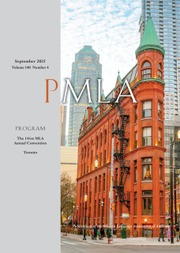Article contents
Jacques Autreau, a Forgotten Dramatist
Published online by Cambridge University Press: 02 December 2020
Extract
When, in 1697, the actors of the Comédie Italienne announced their intention of producing Fatouville's La finta matrigna ou la belle-mère supposée, readily associated with La fausse prude, a novel published in Holland againt Mme de Maintenon, the machinery of the law-moved swiftly. On May 14th of that year M. d'Argenson, head of the police, closed the theater, thereby terminating the activities of the Italian troupe in the seventeenth century. For so long a time did Mme de Maintenon deprive the court of amusements that, as soon as the period of mourning for Louis XIV was ended, the regent Philippe d'Orléans hastened to re-establish in France the theater which had previously supplied an abundant source of entertainment. In 1716 he succeeded in bringing to Paris, under the leadership of Luigi Riccoboni, a troupe which began performances on May 18 at the Palais-Royal but removed on June 1 to the repaired and redecorated Hôtel de Bourgogne.
Information
- Type
- Research Article
- Information
- Copyright
- Copyright © Modern Language Association of America, 1931
References
page 498 note 1 La Comédie Italienne en France, p. 183.
page 498 note 2 Cours de littérature dramatique, ii, 347–8.
page 499 note 3 Conspicuous examples of this are to be found in the Anecdotes dramatiques, 1775, and in the Annales dramatiques, 1808–12.
page 499 note 4 Œuvres de Monsieur Autreau, 4 vols., chez Briasson, Paris, 1749. Many of Autreau's plays had been already published separately; but this edition is the only complete one. It contains a lengthy preface by Charles-Etienne Pesselier, and, in addition to the plays, includes numerous poems.
page 499 note 5 Dictionnaire critique de biographie et d'histoire, 2e édition, Henri Plon, 1872.
page 501 note 6 Œuvres complètes de Voltaire, Garnier frères, vol. 22 (1879), pp. 333–334.
page 501 note 7 The complete sonnet is given in the Œuvres de J.-B. Rousseau, Lefèvre, 1820, vol. 2, pp. 411–414.
page 502 note 8 Jal cites this line in establishing the date of the presentation of the portrait. Since Autreau was bom in October, 1657, seize lustres et quelques mois would indicate that the event occurred in 1738.
page 502 note 9 Karl Heinrich Heinecken: Dictionnaire des artistes dont nous avons des estampes, Leipsig, Jean-Gottlob Immanuel Breitkopf, 1778, i, 674.
page 505 note 10 Annales du Théâtre Italien, 3 vols, chez la Veuve Duchesne, 1788, i, 29–30.
page 505 note 11 Le théâtre en France au xviiie siècle, p. 175.
page 511 note 12 French with a German accent had been used on the stage, but not uttered by a native German. Cf. Sbrigani, disguised as a Flemish merchant, and the two Swiss, in Monsieur de Pourceaugnac.
page 511 note 13 Op. cit. vol. i, pp. 198–228.
page 514 note 14 Op. cit. i, 292–3.
page 514 note 15 Parfaict frères. Dictionnaire des théâtres de Paris, 7 vols., Lambert, 1757; i, 84 ff.
page 518 note 18 It is interesting to note the recurrence of this conception in eighteenth-century French comedy. Cf. Campistron: Le jaloux désabusé, 1709; Destouches: Le philosophe marié, 1727, and Les philosophes amoureux, 1730; d'Allainval: L'école des bourgeois, 1728; and La Chaussée: Le préjugé à la mode, 1735.
page 522 note 17 Anecdotes dramatiques, 3 vols, Veuve Duchesne, 1775; i, 249.
page 522 note 18 Bibliothèque des théâtres, 1733, p. 93.
page 523 note 19 Jean Fleury: Marivaux et le marivaudage, Plon, 1881, p. 150.
page 524 note 20 To establish this influence as a fact and eliminate any conjectural element, would, of course, necessitate examining other dramatic works produced at this same time at the Comédie Italienne and proving that such plays do not reveal similar characteristics. This the writer hopes to do later in a paper devoted solely to a study of the possible influence of Autreau on Marivaux. It is worthy of note that neither Larroumet, in his Marivaux, sa vie et ses œuvres, nor Fleury, in his Marivaux et le marivaudage, mentions any dramatists who may have influenced Marivaux at the outset of his dramatic career.
page 525 note 21 Œuvres complètes de Regnard, 2 vols., Delahays, 1854; i, 517–8.
page 527 note 22 Dictionnaire portatif historique et littéraire des théâtres, 2d edition, 1763, p. 106.
- 2
- Cited by

